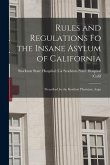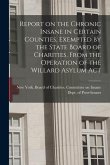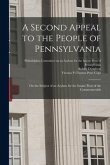Delve into the inner workings of 19th-century mental healthcare with "Rules and Regulations of the Insane Asylum of California." Originally prescribed by the Resident Physician on August 1, 1861, this meticulously reproduced text offers a rare glimpse into the daily life and institutional rules governing the Stockton State Hospital, one of California's earliest psychiatric facilities. Explore the historical context of mental health treatment as it was understood and practiced in the mid-1800s. This document provides invaluable insight into the legal and social frameworks surrounding psychiatric care, reflecting the attitudes and approaches to mental illness prevalent at the time. A crucial resource for those studying medical history, social work, or the evolution of mental health institutions, "Rules and Regulations of the Insane Asylum of California" sheds light on a critical era in the development of psychiatric medicine. This historical record will be of particular interest to anyone concerned with the history of asylums, institutional care, and the broader landscape of mental health in America. This work has been selected by scholars as being culturally important, and is part of the knowledge base of civilization as we know it. This work is in the public domain in the United States of America, and possibly other nations. Within the United States, you may freely copy and distribute this work, as no entity (individual or corporate) has a copyright on the body of the work. Scholars believe, and we concur, that this work is important enough to be preserved, reproduced, and made generally available to the public. We appreciate your support of the preservation process, and thank you for being an important part of keeping this knowledge alive and relevant.
Bitte wählen Sie Ihr Anliegen aus.
Rechnungen
Retourenschein anfordern
Bestellstatus
Storno









![Total Abolition of Personal Restraint in the Treatment of the Insane [electronic Resource]: a Lecture on the Management of Lunatic Asylums and the Tre Total Abolition of Personal Restraint in the Treatment of the Insane [electronic Resource]: a Lecture on the Management of Lunatic Asylums and the Tre](https://bilder.buecher.de/produkte/64/64535/64535974m.jpg)